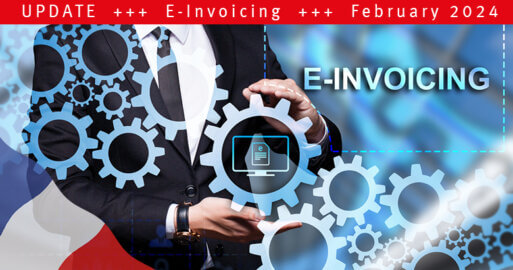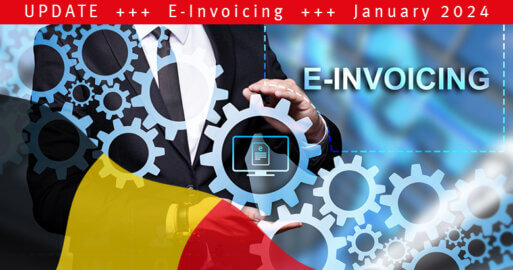VAT in the Digital Age (ViDA) – An Initiative to Modernize the VAT System in the EU

The VAT system within the EU is non-uniform, complex and inefficient. However, hope is at hand. Unwieldy administrative procedures, tax return obligations that are difficult to keep track of and, last but not least, tax fraud should finally be put to rest through digitalization. The EU Commission has launched the initiative ViDA, short for VAT in the Digital Age, and set up an action plan for fair taxation. This article explains what this is all about as well as the time frame foreseen to modernize the European VAT system.
What is ViDA – VAT in the Digital Age?
ViDA stands for VAT in the Digital Age, while of course, VAT means Value Added Tax. ViDA is an initiative by the EU Commission that aims to modernize the European VAT system/s. On 8 December 2022, the European Commission presented the long-awaited draft directive COM (2022)701 on VAT in the Digital Age (ViDA), as well as a proposal for the corresponding EU regulation, COM (2022)703. One goal is to transmit and check data subject to reporting requirements more quickly and accurately. This would apply to concepts such as VAT reverse charge for intra-community transactions. The information transmitted by taxable persons will be structured and standardized in near real time, which will particularly help to detect VAT fraud more quickly.
EU citizens, associations and service providers had the opportunity to give feedback and opinions to the European Commission on this adopted legislation until 4 April 2023. All feedback received during this time will be collated by the European Commission and submitted to the European Parliament and the European Council to feed into the legislative debate. The feedback has also been published on the official website of the European Union.
The EU Commission’s Action Plan for Fair and Simple Taxation highlights the need to examine how tax authorities can use technology to fight tax fraud and benefit businesses, and whether current VAT rules are appropriately geared towards doing business in the digital age. As early as 2022, the Action Plan announced a legislative proposal on “VAT in the Digital Age” (ViDA), which would include:
- VAT reporting obligations and electronic invoicing
- VAT rules for the platform economy
- A single VAT registration scheme within the EU
What does the ViDA initiative hope to achieve?
One of the main objectives of digital reporting is to replace the previous recapitulative statements. Essentially, therefore, digital reporting’s scope basically extends to cases which previously required a recapitulative statement to be submitted. (cf. Art. 263 of the 2006/112 EU VAT code).
A further main objective of the ViDA initiative is to modernize the EU VAT system. This comprises the following tasks:
- Ensure an efficient and fair VAT system for the digital economy.
- Eliminate unwieldy administrative procedures, and streamline processes for cross-border transactions. The new VAT system ensures that Member State authorities are fully informed of transactions in near real time. This means VAT fraud can be tackled immediately, especially within EU borders.
- Ensure smooth functioning of the common market.
- Simplify and adapt VAT rules to the new realities of the digital market in order to facilitate tax compliance and create greater legal certainty.
- Optimize reporting obligations through digitalization.
Businesses wishing to do business with consumers in another Member State will only need to register once across the EU for VAT purposes and will be able to fulfil their VAT obligations in one language through a single online portal.
The ViDA report estimates that this new system will save around €4.3 billion in administrative costs due to compliance with new tax rules. The EU Commission also estimates that this system will lead to 1.9 billion fewer euros being spent on postal deliveries alone in the future.
What is the current schedule for implementing ViDA?
Figure 1 shows the proposed time plan for implementing regulation COM (2022)701 on VAT in the Digital Age (ViDA).

Milestones and deadlines for implementing ViDA:
- An ECON Committee debate on the dossier as well as a draft report should occur by 30 May 2023.
- There will be the opportunity to make amendments until 14 June 2023.
- Amendments tabled will be debated on 18 July 2023.
- The vote in the ECON Committee is scheduled for 24 October 2023.
This is an ambitious schedule, especially considering the following EU internal processes:
- The EU Council may not adopt a decision without consulting the EU Parliament. This means that there will be simultaneous discussions in the EU Council and the EU Parliament, which can delay decision-making. It cannot be ruled out that the ViDA project may be delayed by a further year.
- There are EU elections planned for May 2024. These may lead to further delays of up to one year until the newly elected EU Parliament can properly resume its work. This makes the current ViDA timetable very tight. It is therefore to be expected that the Federal Ministry of Finance (BMF) will publish a new timetable after 4 April 2023, once they have finished receiving feedback.
Recommendation: The schedule for implementing ViDA needs to be reconsidered
Against this background, there are warnings against a hasty implementation of the directive in the next few months and calls for extending the implementation schedule. The EU Commission has been called upon by several entities, including business associations, certified service providers and EU citizens, to introduce a binding lead time of twelve months for the enforcement of national mandates in order to counteract the current demands being made by Member States for national opt-outs.
Furthermore, there are calls to reconsider the invoicing deadlines and transfer obligations. The two-day deadlines for issuing and transmitting invoices seem unreasonably short. This is especially true if there are no powerful systems to support automation. This particularly affects smaller businesses, burdening them with additional bureaucracy, and meaning that they could face difficulties in exceptional and not so exceptional circumstances, such as staff on sick leave.
The same issues apply to incoming invoices. Here, the reporting process is even more difficult because it is usually not possible to carry out invoice verification within two days. Should this be enforced by the EU, all incoming invoices would have to be reported for the time being, and later corrected.
The situation becomes particularly critical if the invoice recipient is also obliged to report after two days, even if no invoice has yet been issued. Up to now, this process has taken place at the end of the year (provision for services received but not invoiced).
As far as reporting obligations for invoicing parties and recipients are concerned, it’s worth looking to the French model. France requires reports on foreign incoming invoices at ten-day intervals, with an invoice to be reported ten days after the end of the current period. This results in an effective reporting period of eleven to twenty days following receipt of invoice.
SEEBURGER will keep you in the loop on ViDA progress and the current legislation status.
What will be the medium and long-term impact of the ViDA initiative?
The ViDA initiative will significantly advance the automation of business and administrative data exchange in Germany and the EU respectively. The end-to-end digitalization of data in supply chains will improve economic efficiency and sovereignty, create jobs and make EU processes more consumer-friendly. Furthermore, e-invoicing should become the rule for all stakeholders rather than the exception. For this to happen, the EU should prioritize a parallel policy initiative at the highest level. Only then will it be possible to expand the concepts of e-invoicing and e-reporting. Both concepts need to be anchored in the VAT Directive, combined with the introduction of a 5-corner network model. This has already been set out in a German expert paper on the decentralised CTC (Continuous Transaction Controls) and exchange model and means:
- seamless, automated transactions based on proven concepts from public procurement (Peppol). This enables the seamless exchange of sales and purchasing data based on open standards for business-to-business (B2B) and between companies and public authorities (business-to-government, B2G).
- stable data quality, confidentiality and state-of-the-art business processes, guaranteed by certified service providers who share a dynamic market. This ensures continuous innovation and data-driven economic efficiency in a decentralised error-free environment.
- guarantees authentic, verifiable transaction source data (VAT data) according to legal compliance guidelines. These are shared within two days with tax authorities, or other authorities used for law enforcement purposes.
- Level playing field thanks to the underlying 5-corner model. This allows smaller companies and large enterprises alike to benefit from the advantages of end-to-end automated processing of sales and purchasing data.
In addition to alignment with the European e-invoicing standard as a minimum requirement for interoperability in the 5-corner network model, it is recommended that ViDA be used both for exchanging invoices between taxpayers themselves and between taxpayers and the tax administration.
The following examples illustrate the process of reporting VAT data and exchanging e-invoices, both between EU countries and globally.

Providers and associations will be relying on interoperability to fully and completely exchange digital reporting data into the future.

How can SEEBURGER help you implement ViDA?
Currently, it looks as if two different reporting systems may be used for cross-border and national transactions. However, this is unlikely to be a viable option for the German economy. The threat of essentially having two technical connections in a non-uniform approach would mean an unfortunate increase in workload for many companies and businesses.
SEEBURGER can of course support companies in connecting and transmitting digital data to both reporting systems. Our global e-invoicing solutions also enable companies with fewer technical resources and lower document volumes to fully participate in mandated e-invoicing. The SEEBURGER Peppol Access Point Cloud Service is a quick and easy way to exchange documents with the Peppol network. In addition, we actively support the development of a national reporting system in accordance with the ViDA initiative.
Webcast-On-Demand
Why not take a look at our webcast on the new e-invoicing requirements for 2023 and discover more about SEEBURGER‘s cloud-based global e-invoicing services can help you?
DownloadThank you for your message
We appreciate your interest in SEEBURGER
Get in contact with us:
Please enter details about your project in the message section so we can direct your inquiry to the right consultant.
Written by: Andreas Killinger
Andreas Killinger joined SEEBURGER in 2014 and is a product manager, responsible for EDI services and software applications. He specialises in SAP solutions, as well as electronic invoicing (e-invoicing) for globally active customers. Following an apprenticeship as an industrial mechanic and a degree in law and administration, he had various roles in the public sector. He then worked for IBM as an SAP Senior Consultant and SAP Project Manager in international SAP projects from 1999 to 2013.





